Australian Government Teaching Resources
Introduce the Australian government to your primary students this school year with printable worksheets, activities, teaching presentations and more curriculum-aligned teaching resources.
This collection of social sciences resources has been created by teachers for teachers like you to help you teach primary students about the prime minister and Parliament, the Australian Constitution, the role of democracy and the law, and how individual citizens can participate and contribute to society. Each resource has been carefully reviewed and curated by a member of our expert teacher team to ensure it's ready to use in your classroom, saving you time on your lesson plans.
New to teaching this section of the HASS curriculum, or just looking for fresh ideas to engage your students? Read on for a primer from our teacher team!
How Does the Australian Government Work?
Teaching government to our students involves breaking down the government into bite-sized chunks so they can get acquainted. Let's do just that by looking at how our government works and some of the important vocabulary!
Federal Parliamentary Constitutional Monarchy
The Australian government functions as a federal parliamentary constitutional monarchy. This means the country has a system of government where power is divided between the central government (federal) and individual state governments.
The government is split into three levels:
- Federal
- State
- Local
Parliament
Parliament is the legislative body of government responsible for making laws in Australia. Australian Parliament consists of two houses:
- The Senate
- The House of Representatives
Prime Minister
The King of Australia is the symbolic head of state, but the acting head of the government is called a prime minister. This federal official is elected by members of Parliament and officially appointed by the governor-general.
The prime minister heads the executive branch of the federal government of Australia.
Governor-General
We mentioned the governor-general officially appoints the prime minister. So who is that?
This representative of the King of Australia has the power to appoint and dismiss the Prime Minister, dissolve parliament and sign legislation into law.
Constitutional Monarchy
A constitutional monarchy is a form of government where the monarch is the head of state but their powers are limited by a constitution, as is true for the king in Australia.
Federalism
The term federalism describes a system of government where power is divided between the central government and individual states or provinces.
Separation of Powers
When governments, like the Australian government, subscribe to the idea of separating powers, they apply a principle that divides the powers of government into three branches: legislative, executive, and judicial, to ensure a balance of power.
Who Were the Last 10 Prime Ministers of Australia?
The prime minister's name and face might already be familiar to your students. After all, this politician appears on TV quite often!
But who are some of the prime ministers who have served in their lifetime and the lifetime of their parents and carers? Australia has had 31 prime ministers since it became a federation in 1901.
Take a look at a timeline of some of the Australian prime ministers throughout history!
- Anthony Albanese (2022-present)
- Scott Morrison (2018 - 2022)
- Malcolm Turnbull (2015 - 2018)
- Tony Abbott (2013 - 2015)
- Julia Gillard (2010 - 2013)
- Kevin Rudd (2007 - 2010, 2013)
- John Howard (1996 - 2007)
- Paul Keating (1991 - 1996)
- Bob Hawke (1983 - 1991)
- Malcolm Fraser (1975 - 1983)
How Are Laws Made in Australia?
Laws can be made in a number of ways in Australia, including federal laws and laws in states and territories. Trying to break down the process of creating federal legislation for your students?
Here's how a law is made!
- Proposal — The first stage of the process is a proposal. Laws can be proposed by members of parliament, government ministers, or even private citizens through a process called private member's bills. The proposal is then submitted as a bill in Parliament.
- Introduction — Once a bill is proposed, it is introduced into either the House of Representatives or the Senate, depending on its origin.
- Debate — Next, the bill is debated by parliament members in both houses. That debate can go on for a long time, and sometimes there are amendments or changes to the bill.
- Vote — Once debating is done, the bill is put to a vote in both houses of Parliament. If the bill passes in one house, it goes to the other house for consideration. If the bill passes in both houses, it is sent to the governor-general for assent!
- Royal Assent — The governor-general gives Royal Assent to laws that have been voted on and passed by both houses. This means the bill becomes law and is included in the statute book.
Australian Government Activities for Kids
Looking for some fresh activities to get your students excited about government? Explore this whole collection for heaps of ideas, and check out some favourites from our teacher team!
- Take a tour of your local council. Give students a chance to see government in action on a local level with an excursion! If you can't go to them, you could instead invite a local councillor to present to the class.
- Create a classroom Constitution — After teaching about the Australian Constitution, have students work in small groups to create a classroom constitution outlining rules and expectations for behaviour. This will familiarise them with the concept of law and governance in a real-world way.
- Create a bill — Have students propose their own law and create a bill that they can present to the class. The goal of this activity is to create careful laws that won't have unintended consequences! Students will have to think critically as they draft their legislation.
- Create a political party — Assign small groups, and have the students create their own political party, modelled on the parties they have learned about. The group should give their party a name, create a logo and establish a platform.
- Free Plan
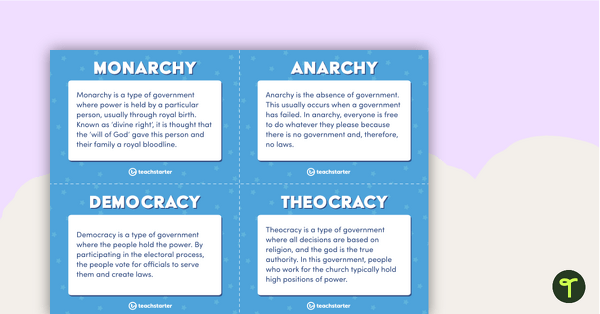
Forms of Government – Flashcards and Sorting Activity
A set of flashcards for students to review the various forms of government and sort them into categories.
- Plus Plan
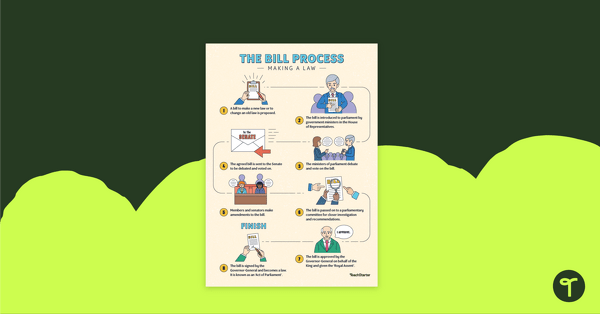
The Bill Process: Making a Law - Infographic Poster
An infographic poster to display in the classroom showing the steps of the bill process.
- Plus Plan
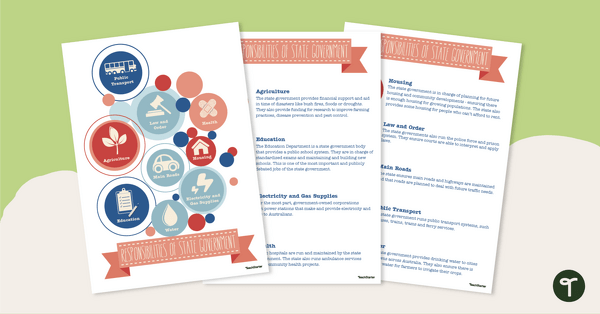
Responsibilities of Australian State Governments - Posters
Explore the roles and responsibilities of Australian state governments with this set of classroom posters.
- Plus Plan
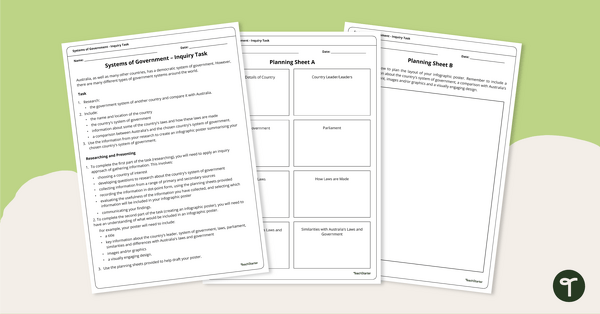
Systems of Government - Inquiry Task
Research different systems of government around the world with this inquiry-based project.
- Plus Plan
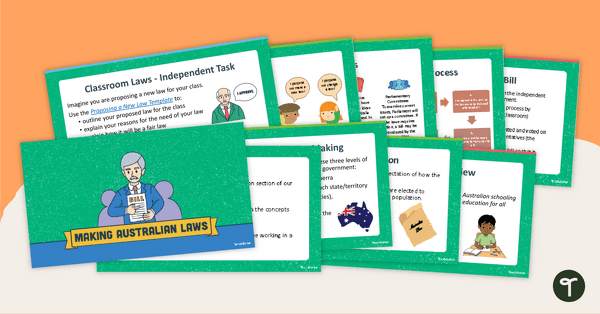
Making Australian Laws PowerPoint
A 15 slide PowerPoint Presentation outlining how laws are made in Australia.
- Free Plan
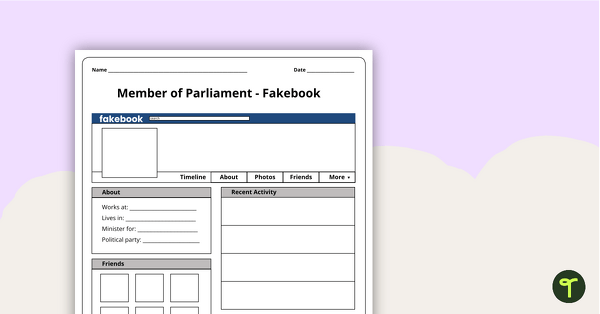
Member of Parliament - Fakebook Template
Get to know the current sitting members of the Australian Parliament with this Fakebook profile template.
- Free Plan
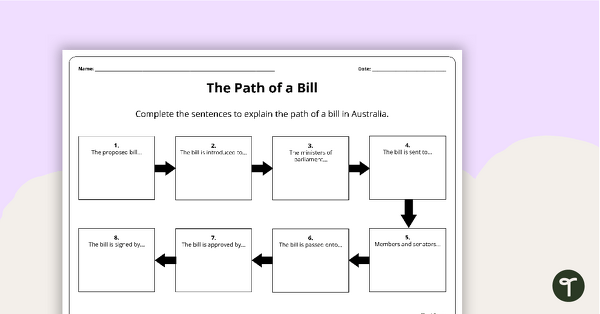
The Path of a Bill - Worksheet
Demonstrate understanding of the path of a bill in Australia with this one-page printable worksheet.
- Free Plan
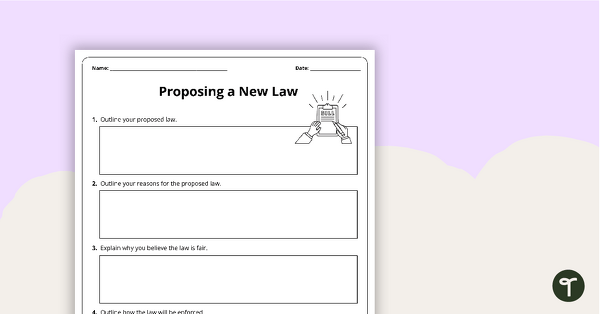
Proposing a New Law - Worksheet
Propose a new law for your classroom or country with this guided Civic and Citizenship worksheet.
- Plus Plan
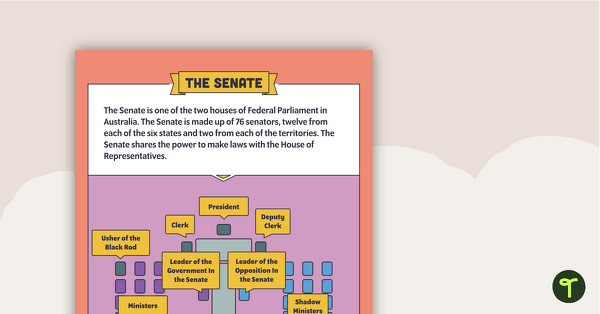
The Senate Infographic Poster
A poster to display in the classroom explaining the structure of the Senate.
- Plus Plan
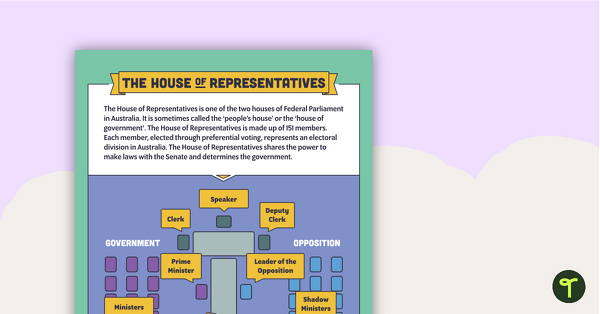
The House of Representatives Infographic Poster
A poster to display in the classroom explaining the structure of the House of Representatives.
- Plus Plan

Separation of Powers Infographic Poster
A poster to display in the classroom explaining how the powers of Parliament are separated between the Judiciary, Executive Government, and Parliament.
- Plus Plan
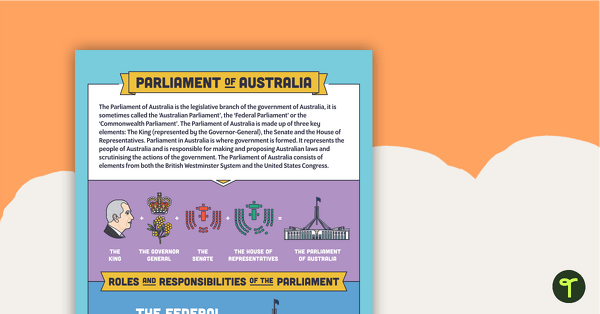
Parliament of Australia Infographic Poster
A poster to display in the classroom that explains the Parliament of Australia.
- Plus Plan
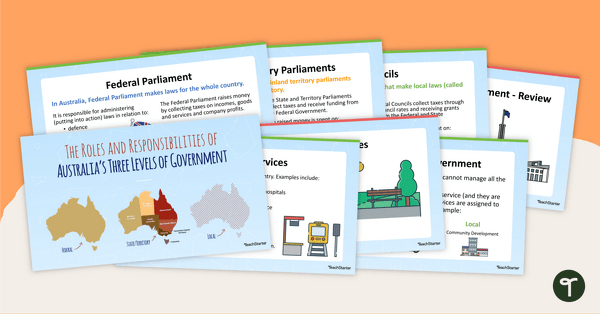
The Roles and Responsibilities of Australia's Three Levels of Government - PowerPoint
Explore the roles and responsibilities of Australia's federal, state and local governments with this informative teaching presentation.
- Plus Plan
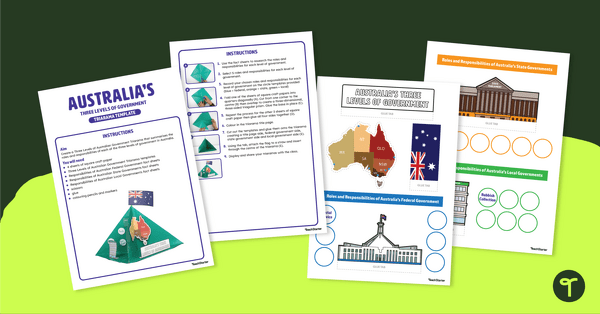
Australia's Three Levels of Government - Triarama Activity
Explore the roles and responsibilities of Australia's three levels of government with this hands-on learning task.
- Free Plan
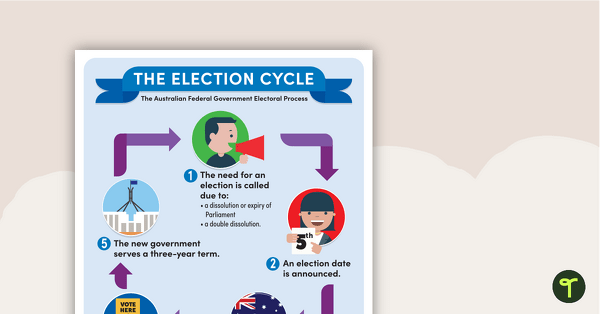
The Election Cycle - Poster
Explore the Australian election cycle with this informative classroom poster.
- Plus Plan
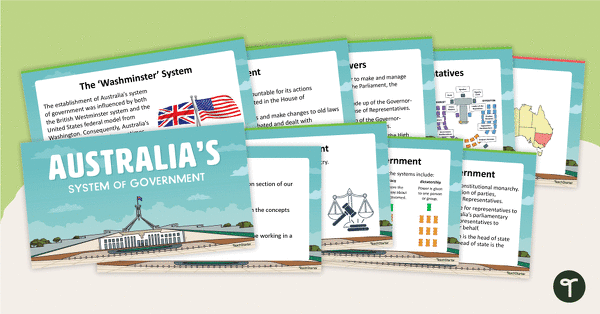
Australia's System of Government - PowerPoint
A 28 slide editable PowerPoint presnetation to use in the classroom when learning about Australia's system of government.
- Plus Plan
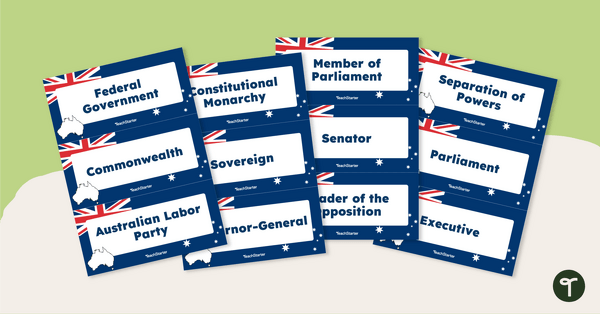
Australian Government Word Wall Vocabulary
Learn vocabulary related to Australia's Federal Government with this set of 42 word wall cards.
- Free Plan
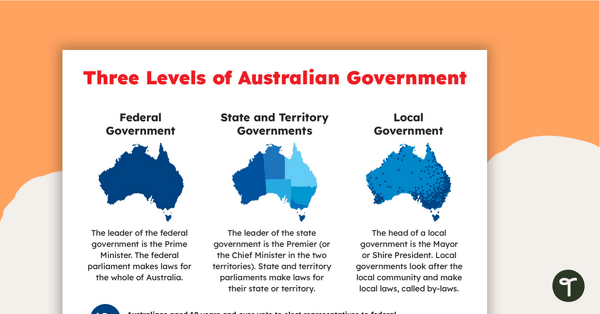
Three Levels of Australian Government - Poster
Review the three levels of government in Australia with this handy classroom poster.
- Plus Plan
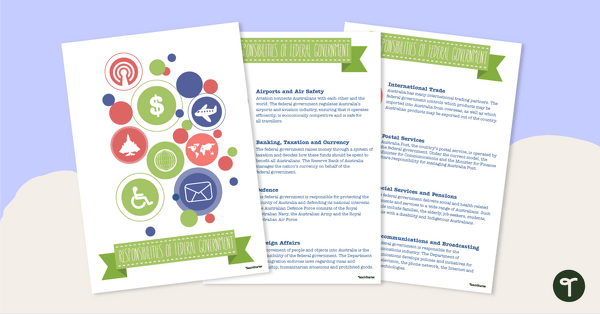
Responsibilities Of Australian Federal Government - Posters
Explore the roles and responsibilities of the Australian federal government with this set of classroom posters.
- Plus Plan
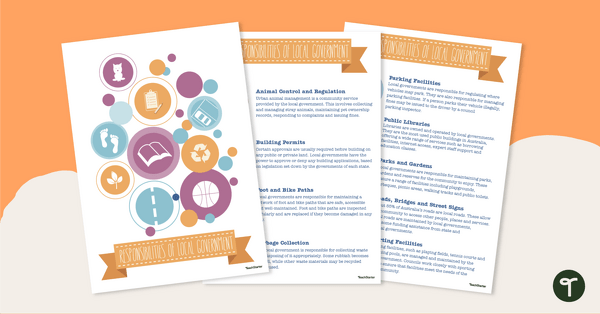
Responsibilities Of Australian Local Governments - Posters
Explore the roles and responsibilities of Australian local governments with this set of classroom posters.
